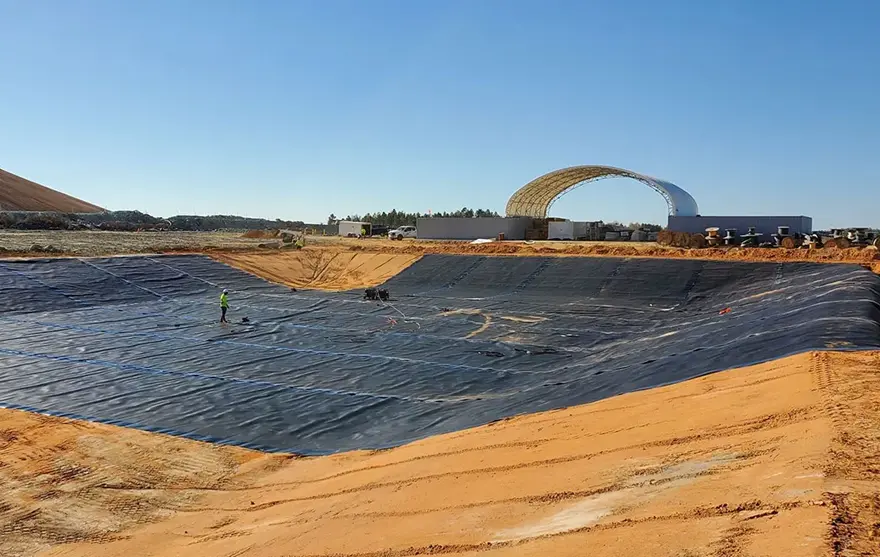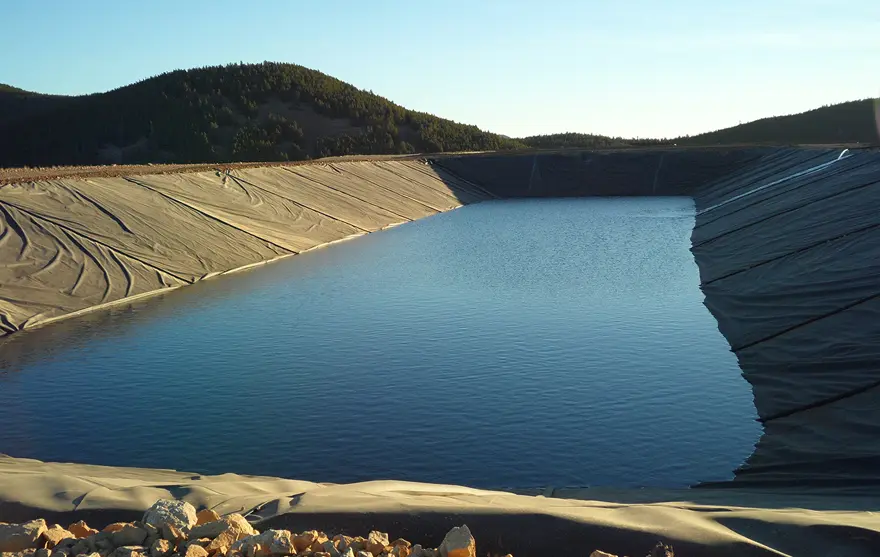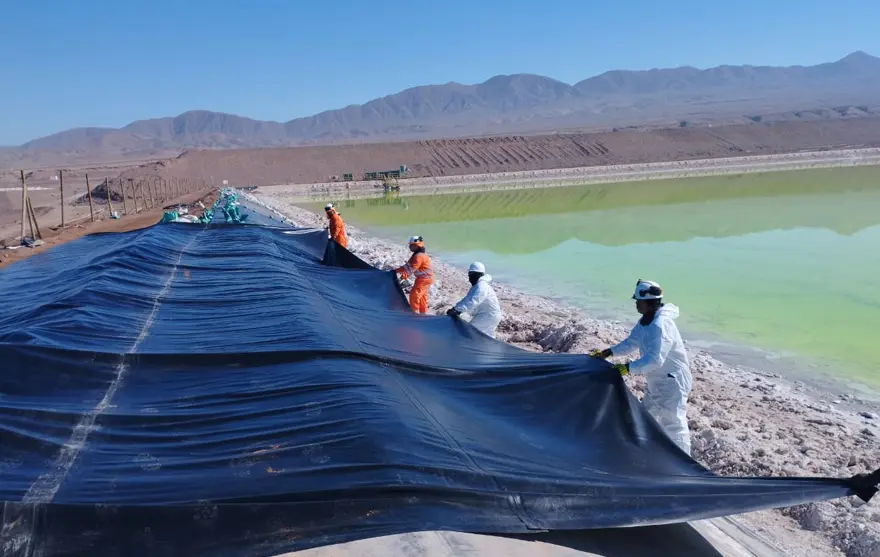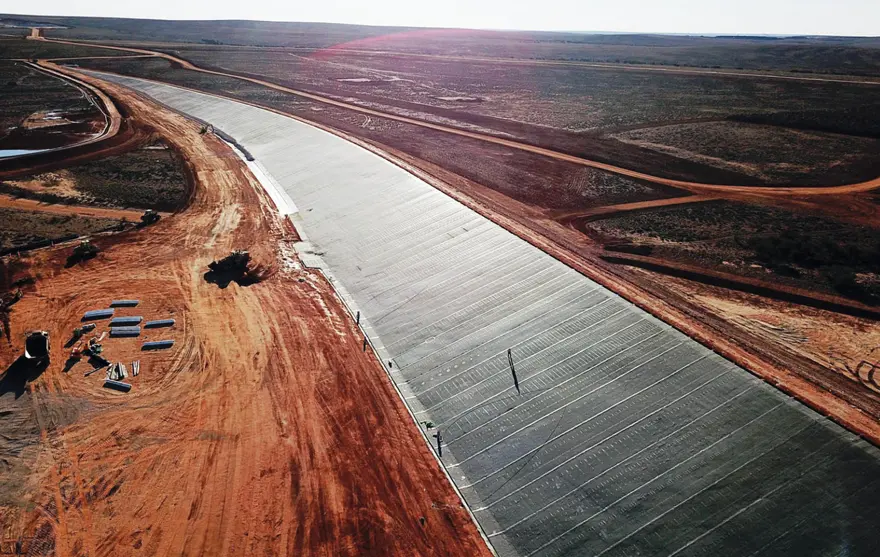
There are several items to consider, including:.
1. Design life – Make sure your membrane life expectancy and warranty meet your project requirements.
2. UV Stability – If you are specifying an exposed membrane make sure you are choosing a membrane that can handle UV and weather exposure for the duration of its life.
3. Chemical compatibility – Not all membranes do well with certain chemicals. Make sure you understand what the membrane will be faced with over its entire life and then choose the membrane that can handle these requirements
4. Dimensional stability – This is especially critical when using a covered membrane as wrinkles can cause several delays in construction and can create long term weaknesses to your overall liner system design.
5. Flexibility – A lot of projects require membranes to contour to uneven subgrade or even need to allow for differential settlement in base materials. You need to make sure your membrane can handle these requirements long term.
6. Construction schedule and location – Projects can require tight deadlines and/or difficult remote access. Understand your installation process and what time and equipment it is going to require to complete your job.



